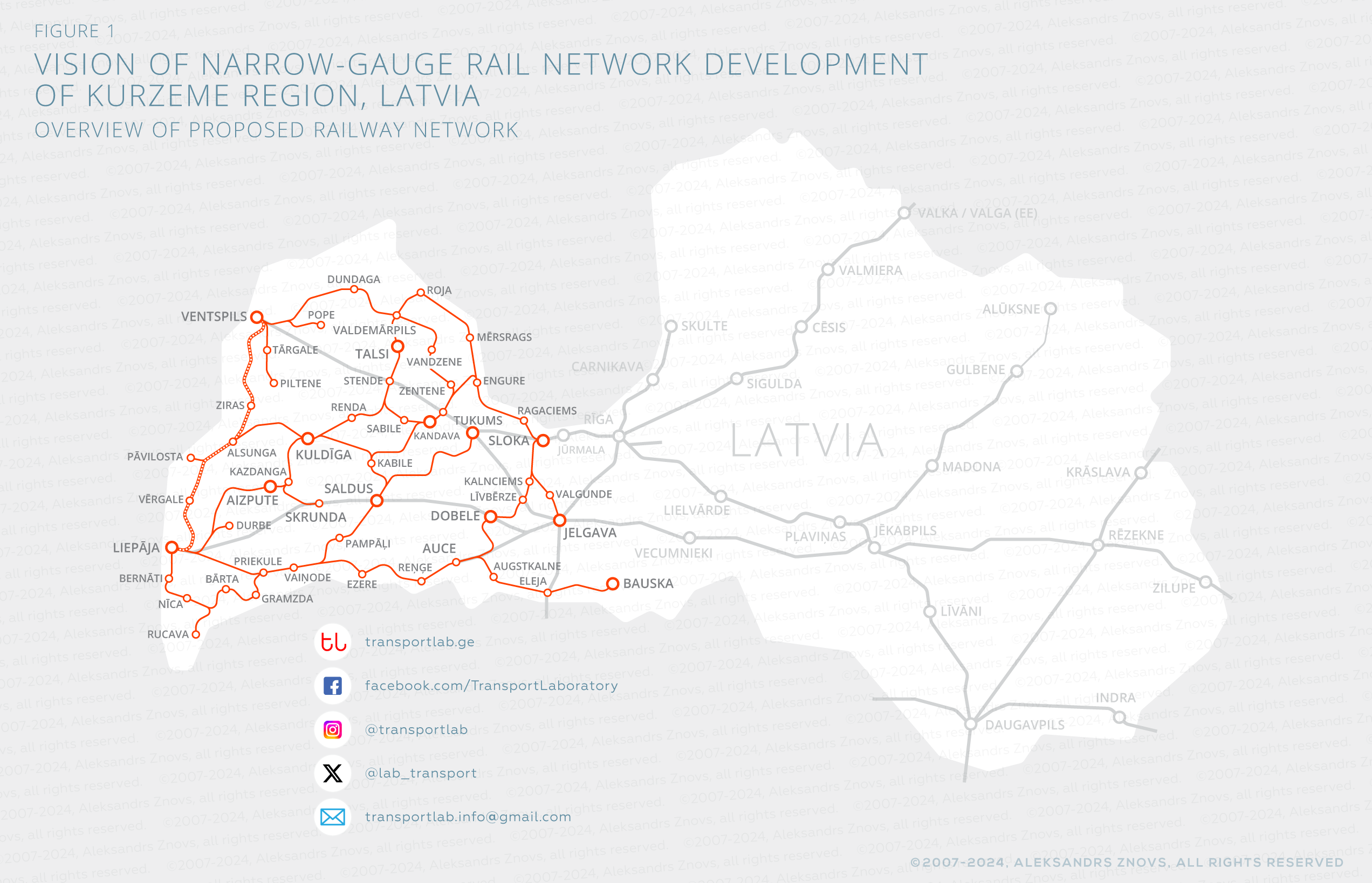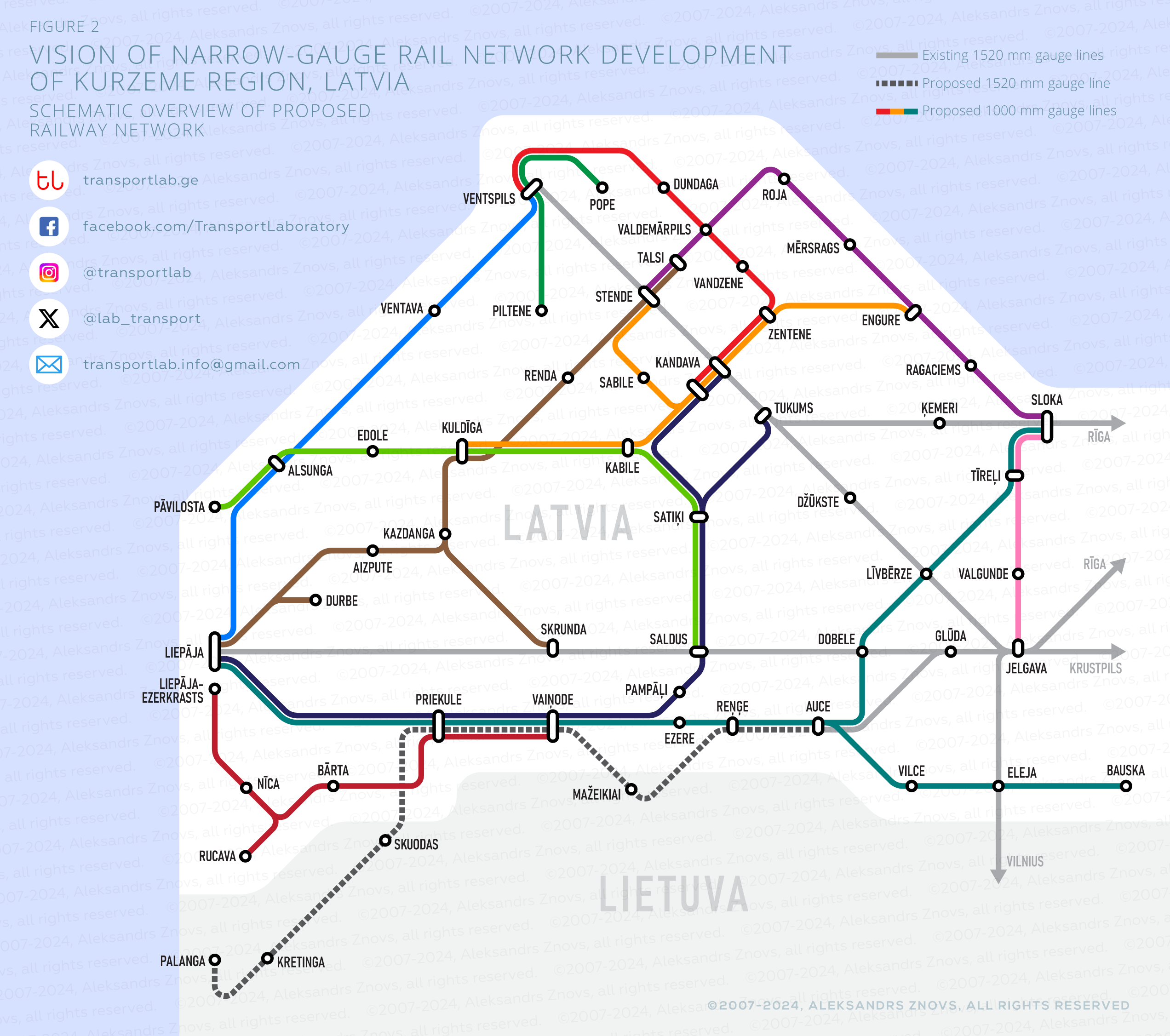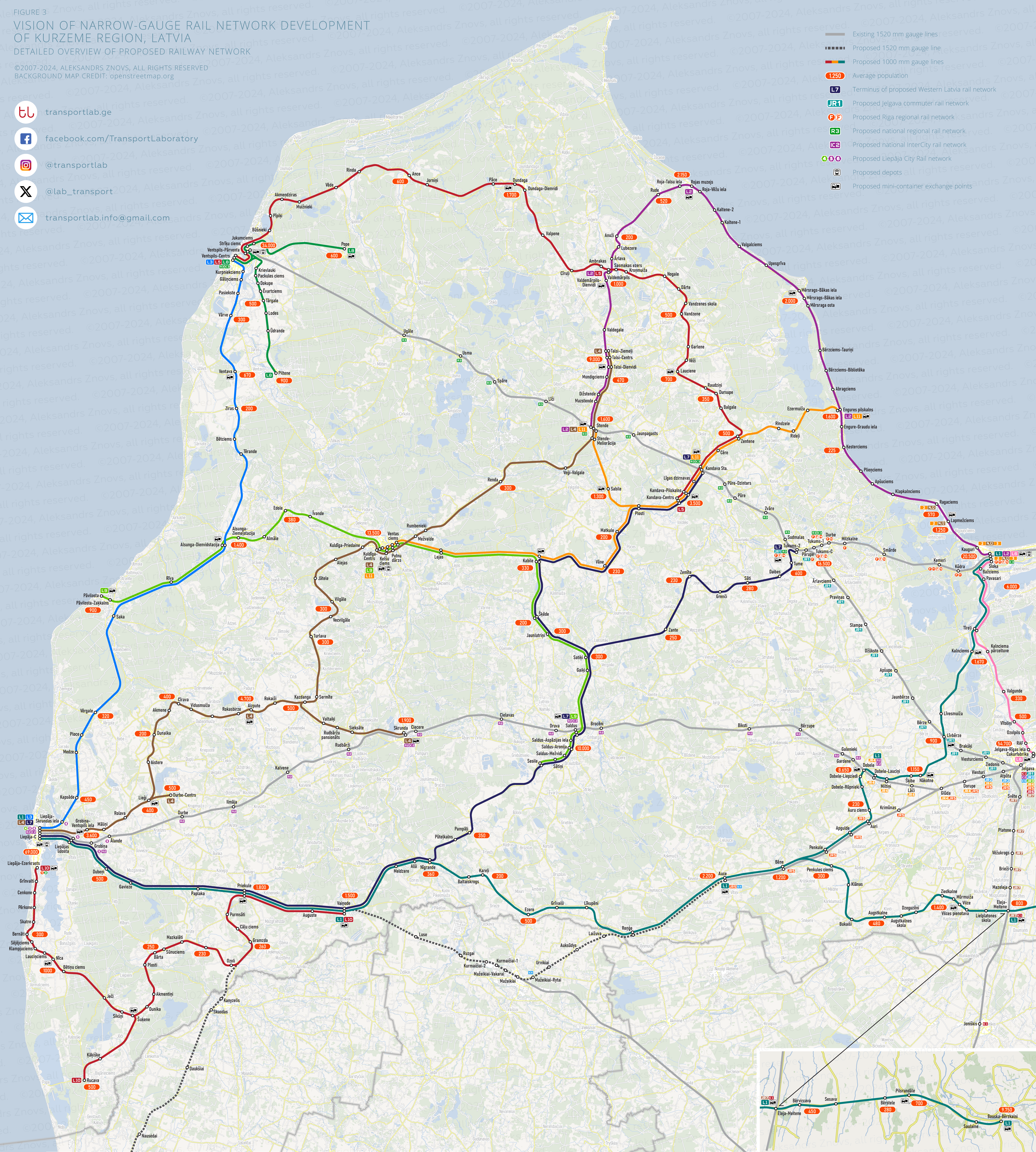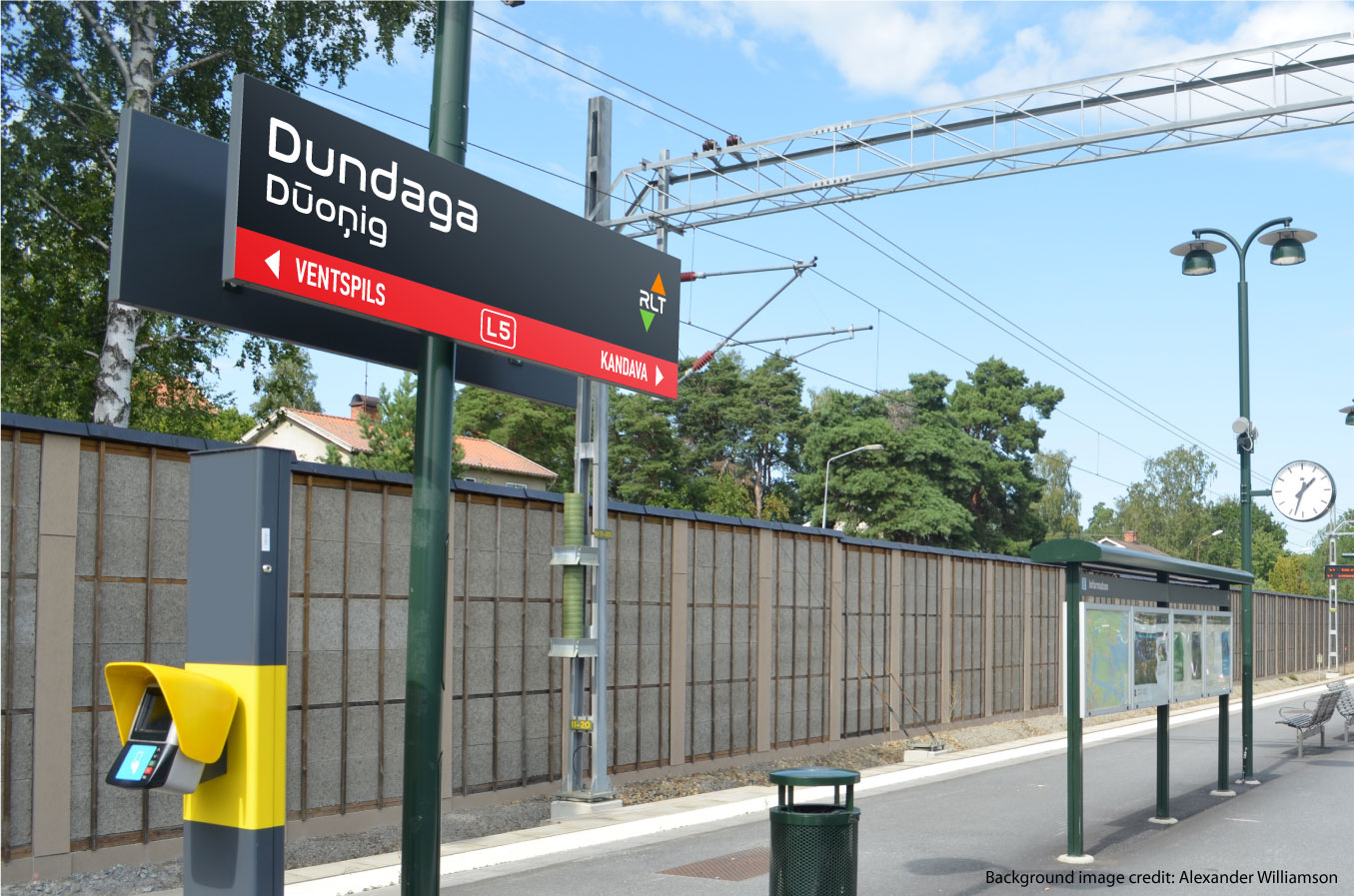Here’s Latvia again and quite ambitious again. This time I am going to share my view of what narrow-gauge railway network of the western part of Latvia (historically called Kurzeme) could look like.
Kurzeme Region once had a pretty well-developed network of different gauge width railway lines though nowadays there are remaining only two pitiful, weakly-used lines that connect Latvia’s capital Riga with the two largest towns – Liepaja and Ventspils. Narrow-gauge railways vanished completely except for the museum railway in Ventspils.
I believe it would be possible to use former narrow-gauge pathways, change them slightly and add additional branches to create a new convenient local passenger service network to replace road transportation.
Narrow-gauge railways in Latvia generally used 750 mm gauge standard. This standard was more relevant to the former Soviet Union and had its drawbacks. Nowadays, it would make more sense to go with the 1000 mm standard found – for example – in Switzerland or Japan. This gauge standard retains all the advantages of narrow-gauge railways: profitability, lower construction and maintenance costs, a relatively small turning radius compared to broad-gauges etc.
I would like to immediately ask you not to look at my vision with a very critical eye. The proposed network is nothing more than my imagination and cannot be a complete version to base on. Of course, we can make countless changes to this concept, remove some branches or add additional ones. In Figure 2 you can see a schematic version of the narrow-gauge network I proposed. For your convenience, all proposed routes are marked with the letter L (local).
The proposed network covers almost all significant towns and settlements in western Latvia and has convenient connections to existing broad-gauge lines. To read about the other Latvia’s broad-gauge rail networks you can here, here, here and here. Now let’s take a more detailed look at my vision. I overlaid all my proposed lines on a geographic map and marked all potential stations:
First, I would like to note that it is very important to use the greenest technologies possible, otherwise, the concept itself does not make any meaningful sense. Electrification of all these sections, without a doubt, would cost too much for a local railway with a relatively small flow of passengers so the region will not be able to afford it. This leaves us a relatively small choice – diesel, electric battery or hydrogen-powered trains. Diesel-powered options are not even worth discussing, battery-powered rolling stock also does not stand up to almost any criticism – this type of transport can hardly be called environmentally friendly according to issues with battery production and recycling. There is only one option left – hydrogen-powered trains or maybe any interesting synergy with some less popular technologies such as pressed air engines. Despite the absolute environmental friendliness of such hydrogen rolling stock and the price of fuel equal to diesel (!), there are also significant problems with this technology. The technology is still quite crude, and the construction of the appropriate infrastructure for hydrogen production and train refuelling is a matter of considerable investment. However, I prefer this technology.
This local network can also have a small international significance in strengthening the ties with Lithuania. Partly using the territory of Latvia a Palanga-Mazeikiai line can be built. On Latvian territory, the route could pass through the sections of the once-dismantled Skuodas-Priekule and Vainode-Mazeikiai lines. On the territory of Lithuania, there could be 18 stations in total.
Oh yes, for dessert I offer you a quick demo visualization of what a station name sign could look like. It could be a dark grey or black background with a station name in the Latvian language. I also propose to duplicate the name in Livonian – the language of the Livonian people who once lived compactly on the Baltic Sea coast, whose language, unfortunately, our country has lost. This would be a tribute to indigenous people who assimilated forming the modern Latvian nation.
Title image credit: Olga Kulieva













